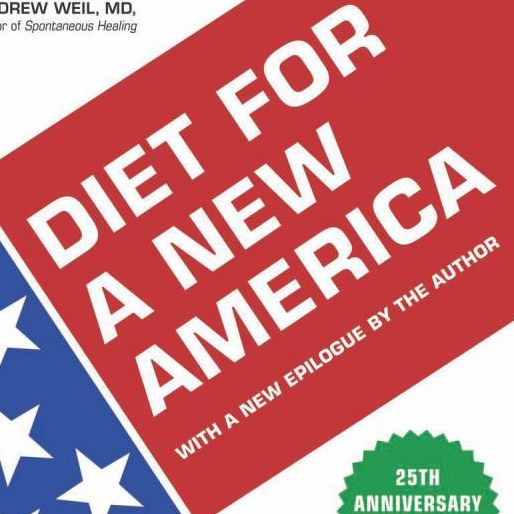More and more people are realizing that our food chain is in crisis. Agribusiness has made profits more important than your health — more important than the environment — and more important than your right to know how your food is produced.
The United States now spends nearly 20 percent of GDP on health care, but levels of obesity, diabetes and chronic illness are higher than ever.
Perhaps because so many people are suffering, beneath the surface, a revolution has been building.
From rural farms to urban dinner plates, from grocery store shelves to state ballot boxes, ever more people are finding their voices and taking action. If you believe in taking responsibility for your health, if you believe there is an important link between the quality of the food you eat and the quality of your life, you are part of this movement.
In the seven years after my dad and colleague, John Robbins, released the first edition of his landmark bestseller Diet for a New America in 1987, beef consumption in the United States dropped by 19 percent. The National Cattlemen’s Association, not pleased, pointedly blamed Diet For A New America. Since then, beef consumption has continued to slowly drop, while organic food sales have increased over 26-fold, to now exceed four percent of market share.
People are also taking an increasing interest in the way that the animals raised for food are treated. In fact, a poll conducted by Lake Research partners found that 94 percent of Americans agree that animals raised for food on farms deserve to be free from cruelty. Nine U.S. states have now joined the entire European Union in banning gestational crates for pigs, and Australia’s two largest supermarket chains now sell only cage-free eggs in their house brands.
The demand is growing for food that is organic, sustainable, fair trade, GMO-free, humane, and healthy. In cities around the world, we’re seeing more and more farmer’s markets (a nearly three-fold increase in the last decade), and more young people getting back into farming. Grocery stores (even big national chains) are displaying local, natural and organic foods with pride. The movements for healthy food are growing fast, and starting to become a political force.
In 2012, California voters put an initiative on the ballot that called would have mandated the labeling of food containing GMOs. Monsanto and their buddies in the pesticide and junk food business were forced to spend $46 million burying California’s voters under an avalanche of deception in order to narrowly defeat California’s Proposition 37 in the November election. Although they won the battle, more than six million California voters had come out in favor of the “right to know.” It was clear that the natural foods movement was becoming a political force to be reckoned with.
Now organizers in 30 other states have begun building GMO labeling campaigns, and Washington’s Initiative 522 stands an excellent chance of passing on November 5. As well, efforts to improve treatment of animals, to make factory farms pay for the pollution they produce, and to reform the food offered in school lunches are all gaining strength.
What You Can Do
Go to the movies. Eric Schlosser’s Food, Inc., Drs. Caldwell Esslestyn and T. Colin Campbell’s Forks Over Knives, and Jeffrey Smith’s Genetic Roulette are some of the most popular and insightful films currently on the market.
Boycott the bad guys. Many people are choosing to boycott companies that oppose labeling of GMOs, that treat farm animals cruelly, or that profit from the sale of junk food. Other consumers are choosing to buy from the good guys. For example, the non-profit Non-GMO Project, which offers a third party certification program, has now verified 764 products, and had a record-shattering 189 new enrollment inquiries in October. You can also check out the farmer’s market nearest you.
Join the struggle for GMO labeling. Want to work for policy change? Think you deserve the right to know if your food contains GMOs? Add your voice, and if possible also your time and your dollars, in support of Washington’s Initiative 522. You can sign on as a supporter here.
Get politically engaged. For the passionate activist, there’s always more you can do, like lobbying your member of Congress, your mayor, your governor, your local media outlets, or your relatives. You can also join the Humane Society’s campaign for farm animal protection, or Farm Sanctuary’s work for animal welfare legislation.
Get engaged and informed. For a directory of organizations working for healthy, sustainable and humane food, as well as free access to dozens of cutting edge articles and tools to help you make a difference, you can sign up to join the Food Revolution Summit. Or check out the forthcoming book, Voices of the Food Revolution, which captures some of the top insights of gamechanging food movement leaders.
Big agribusiness would probably like us all to sit alone in the dark, munching on highly processed, genetically engineered, chemical-laden, pesticide-contaminated pseudo-foods. But the tide of history is turning, and regardless of how much they spend attempting to maintain their hold on our food systems, more and more people are saying No to foods that lead to illness, and YES to foods that help us heal.

 From rural farms to urban dinner plates, from grocery store shelves to state ballot boxes, ever more people are finding their voices and taking action. If you believe in taking responsibility for your health, if you believe there is an important link between the quality of the food you eat and the quality of your life, you are part of this movement.
From rural farms to urban dinner plates, from grocery store shelves to state ballot boxes, ever more people are finding their voices and taking action. If you believe in taking responsibility for your health, if you believe there is an important link between the quality of the food you eat and the quality of your life, you are part of this movement.

